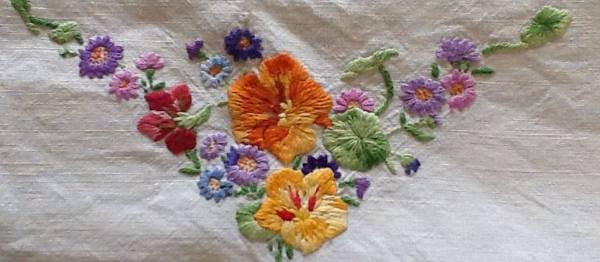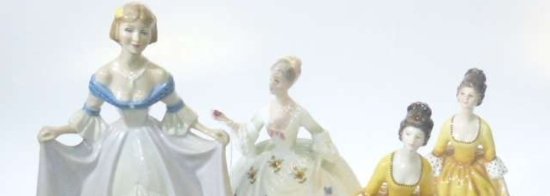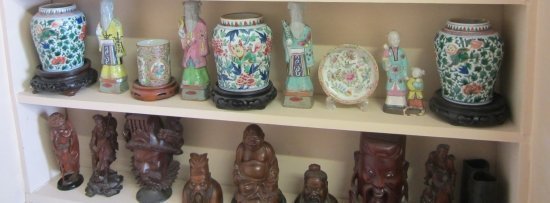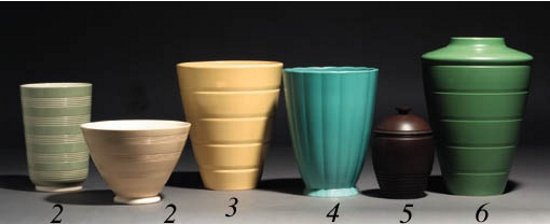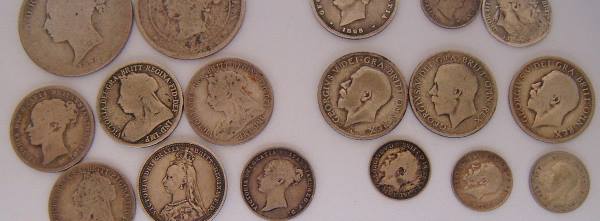Arts and Crafts was one of the most far-reaching and popular movements of modern times. In the Western world, it spanned three decades from the 1880s to the outbreak of the Great War. The Folk Crafts or Mingei movement flourished in Japan in the inter-war years. Arts and Crafts’ influence continues to be felt and its ethos maintained in the craft traditions of quality of materials and good workshop practice still in evidence today.
Origins and philosophy
The movement’s origins are well-known; AWN Pugin (1812-1852) and the Gothic Revival in architecture paved the way. Significantly, Pugin was the first architect whose designs included tapestries, textiles, stained glass, wood and other decorative elements. Then John Ruskin (1819-1900) published his reassessment of architectural principles, the role of the craftsman and the relation of art to life in The Stones of Venice (1851-3). This confirmed William Morris’s perception of the value of natural materials, traditional processes and a harmonious environment where the humblest everyday article should be beautiful as well as useful. By 1888, when the first Arts and Crafts exhibition was held in London, its organisers could point to Morris’s international recognition as a designer and commercial success as a manufacturer to support their philosophy.
This recognised the dignity of the artist-craftsman and the pleasure in creativity that is his right. In the increasingly industrialised and profit-driven 19th century many people worked – and lived – in miserable conditions over which they had no control. Workers had no status, no independence and could take little pride in the end product of their labours which was often of poor quality. Writers, political thinkers and artists were conscious of society’s failings and calling for change. Arts and Crafts practitioners found a ready response to their ideas.
Another feature of Victorian society, at least as far as the middle classes were concerned, was clutter. A typical Victorian interior has dark colours, heavy drapes, a lot of furniture and innumerable knick-knacks. An Arts and Crafts interior is light and airy, with built-in furniture and decoration following the lines of the building to form an organic whole. This is where Arts and Crafts differs radically from the Aesthetic Movement and from Art Nouveau. Neither of these latter movements had any social dimension, but both undoubtedly contributed in design terms to Arts and Crafts and encouraged a move away from nostalgic medievalism.
The Aesthetic Movement in the 1870s and 1880s was a reaction against perceived philistinism in fine and decorative art and architecture. It pursued beauty and the pleasure it gave, art for art’s sake. Art Nouveau style, although using similar motifs to many which inspired Arts and Crafts – Celtic designs, leaves and flowers – was a superficial, applied decoration, requiring luxury materials. It must also be stressed that items of Arts and Crafts production could vary widely in appearance; they followed not a style but a design principle where the finished product reflected its purpose and the (often modest) materials used.
Motivations behind the movement also varied considerably. While its prime movers were undoubtedly crusaders for social change and the improvement of the lot of the working classes, many manufacturers saw their ideas as a means of improving production. Titus Salt in Yorkshire, the Cadbury family in Bournville and the Rowntrees in York, with their model villages and paternalistic care for their employees, were far from being merely enlightened philanthropists.
Town and country
Another contradiction inherent in the Arts and Crafts movement was the emphasis on the countryside. Seen as the repository of a traditional and healthy way of life, it was the ideal place to live and work and very many workshops were established in rural areas. These used local raw materials and exploited local skills – copper in Cornwall, linen in the Lake District, lace in Limerick, carpets in Donegal – but their customers inevitably were fashionable shops based in towns and cities. Liberty’s in London is a prime example, catering for a moneyed clientele.
And small workshops could not meet the eventual demand; even some of William Morris’s textile production was sub-contracted to the dark Satanic mills of Yorkshire and Lancashire. Similarly, only the wealthiest could afford the entire Arts and Crafts home, where architecture, garden design and interior decoration were all planned and executed as a whole. However, contradictions aside, Arts and Crafts was a hugely influential movement reaching all areas of creativity – furniture, ceramics, textiles, graphic arts, metalwork, jewellery, wallpaper, glass, carpets, bookbinding and more – and fostering significant improvements in education, training and quality of life.
The role of education
In the 1840s and 1850s various attempts were made to establish a framework of training for designers in industry. The Government School of Design, set up in 1837 at Somerset House, moved in 1852 to Marlborough House under the direction of Henry Cole. When the South Kensington Museum (renamed the Victoria and Albert Museum in 1899) was founded in 1857 the School, Cole and the design collection moved there. Cole instituted a national design curriculum, applied throughout the country’s art schools. So far, so good. But design was still seen as separate from manufacture and designers learned skills of draughtsmanship with no relation to industrial processes. Nor were these processes questioned.
It was a reverse educational thrust which effected real change. The existence of colleges and schools of art up and down the country provided venues for individuals or groups of artists to run classes teaching craft skills together with design. These put the principle of “unity of art” into practice and encouraged the development of small workshops using traditional techniques such as those pioneered by William Morris.
William Morris and the Arts and Crafts Movement
From the 1860s, William Morris (1834-1896), Edward Burne-Jones (1833-1898), Dante Gabriel Rossetti (1828-1882) and their fellow Pre-Raphaelites were living and working in true Arts and Crafts collaboration. Philip Webb designed Red House at Bexleyheath in Kent in 1859 for Morris and his wife, Jane. The firm of Morris, Marshall, Faulkner & Co was set up two years later to provide furnishings. Morris & Co, as it later became, produced a whole range of goods but is probably best known for textiles and wallpaper. William Morris taught his workers hand weaving, natural dyeing and hand-block printing.
Morris’s ideas and writing developed along largely political lines and his attitude to Arts and Crafts groupings – even to the plans for an 1887 Exhibition – was somewhat reserved. But he was nonetheless the major inspiration to their members. The Century Guild was founded in 1882 by a group of designers to promote the idea of the “unity of art” and the equal status of the applied arts and fine art. It lasted until 1892, by which time the Art Workers Guild (1884) and the Arts and Crafts Exhibition Society (1887) were up and running. Morris was a member of both until his death in 1896.
These groups and their journals were crucial to the spread of Arts and Crafts ideas. It was the last group which gave the movement its name and promoted the Exhibition which aimed to challenge the superiority – in their own eyes at least – of the Royal Academy and the Institute of British Architects. It also brought together practitioners from all the different fields of the decorative arts and gave them a coherent voice. Its president was Walter Crane (1845-1915), a major player whose design studio produced ceramics and bookbindings and who was part-time Director of Design at the Manchester School of Art from 1893 to 1898.
The first Exhibition came in 1888 in Regent Street’s New Gallery, opened the previous year. It was funded by sponsors and firms were invited to exhibit. After two successful years, and a third which made a loss, a triennial Exhibition cycle was established. Critical reaction was mixed, inevitably, but there is no doubt that the Arts & Crafts Exhibition Society had a marked influence at home and abroad and was instrumental in raising the status of the applied arts. Other societies and exhibitions followed all over the country, providing a showcase for the output of provincial colleges and firms as well as rural workshops. Standards rose impressively and Britain attracted significant numbers of buyers from abroad.
The reach of
Arts & Crafts
London was an ideal city for the movement’s take-off. Since the Middle Ages it had had a vibrant craft tradition serving a concentration of wealthy customers from Court, Church, nobility and merchants. In spite of the disdain with which some designers regarded “trade”, they did work profitably with the luxury end. Schools of Art established links with manufacturers who set up design studios. Doulton is a case in point: their ceramics factory in south London collaborated with Lambeth School of Art from the 1860s.
Arts & Crafts spread rapidly throughout the British Isles. Schools of Art and municipalities in Glasgow, Edinburgh, Liverpool, Birmingham and Dublin all developed their own interpretation and specialisation. As did craftworkers in those cities. Glasgow Corporaton Galleries imported the 1890 Exhibition virtually wholesale after it closed in London. In 1893, Francis Newbery (1855-1946), director of the School of Art, instituted craft classes. One of the teachers was his wife, Jessie, a gifted embroiderer. In the 1890s George Walton pioneered the “Glasgow Style”, elegance of form with stylised natural motifs and delicate colours. In the middle of the same decade came Charles Rennie Mackintosh and the “Spook School” with its strange shapes and symbols. Mackintosh designed the 1896 Glasgow School of Art, but thereafter seemed to move away from true Arts & Crafts towards a preoccupation with visual effect for its own sake.
Birmingham was another city with its own take on the movement. Unlike other major industrial centres, its production was concentrated in small workshops, especially in the Jewellery Quarter. Civic pride also featured strongly, as did idealism where manufacturing quality and public education were concerned. Administrative reforms in the 1870s were followed by the creation of the Municipal School of Art in 1883 and the City Art Gallery two years later. In 1890 came the Vittoria Street School for Jewellers and Silversmiths in the Jewellery Quarter. The Birmingham Guild of Handicraft and the Bromsgrove Guild supported workshops in several media.
Manchester and Sheffield were also thriving centres for the Arts and Crafts movement. It was in the cities that all the necessary resources were readily available, but much of the movement’s inspiration came from the countryside and from rediscovered regional traditions. This became a national phenomenon in Ireland, where Arts and Crafts was a vehicle for celebrating Irishness and its myths and imagery, part and parcel of the nationalist ideology. Elsewhere, many designers lived and worked in rural areas, for example in the Cotswolds. Chipping Campden and Pinbury in Gloucestershire were home to CR Ashbee, Ernest Gimson and Sidney Barnsley, London trained architects who developed an international reputation as designers.
Communities such as theirs fostered tradition and gave a welcome boost to the rural economy. They involved women and children in a creative endeavour radically different from the urban exploitation so characteristic of the industrial revolution. The Haslemere Peasant Industries in Surrey produced goods “home-made for home use”. Their candlesticks, beehives, saucepans and baskets were a far cry from the silks on sale at Liberty’s, but no less Arts and Crafts for that.
Arts and Crafts at home and in the community
It is this diversity of product combined with unity of purpose that characterises Arts and Crafts and is exemplified in the Arts and Crafts home, whether a simple cottage, a London mansion or a large country house. The term “vernacular” was first applied to architecture in 1857 and epitomises Arts and Crafts’ use of the best in traditional English style. Old buildings were renovated and new ones built to incorporate an eclectic mix of old and new furnishings and modern improvements such as electric lighting.
The coming of the railways made it easy for rich industrialists to travel between their country homes and the city. The Arts and Crafts movement saw some brilliantly fruitful collaborations between architects and garden designers such as Edwin Lutyens and Gertrude Jekyll. Architects used the setting of a house to inform its design; one such was MH Baillie Scott. Blackwell, the house overlooking Windermere which he designed for the Manchester brewer Sir Edward Holt, echoes local drystone walling in the walls supporting the garden’s series of terraces. The ubiquitous rowan tree whose leaves and berries appear in the family crest also appear in the plasterwork, stained glass and other decorative features running through the house.
The Church was another rich source of commissions. Again, the whole edifice and its furnishings could be addressed and there was a wealth of tradition to draw on and rework. In urban architecture, tenements were reborn as tall buildings with tall chimneys – a delight to the eye and a sensible response to ever growing need for housing.
The legacy of Arts and Crafts
Clearly, the ideals of the movement were precisely that – ideals. Britain was generally more reluctant than Europe and USA to apply them to industrial processes. But, if Arts and Crafts was to become mainstream and profitable then these applications were inevitable. What the movement has done is to create an awareness of the status of craftworkers and an appreciation of good design and quality in a finished product. And these are reflected in demand. Robert Thompson’s Craftsmen of Kilburn in North Yorkshire are still making furniture in the Mouseman’s tradition and their order books are full three years ahead.
International Arts and Crafts at the V&A
There is no better way to appreciate the diversity and influence of Arts and Crafts than a visit to the V&A’s spring exhibition, just opened in South Kensington. Over 300 artefacts are on show, a third from the Museum’s own collections. The exhibition is laid out in sections – Britain, America, Europe and Japan – so the visitor literally follows the spread of Arts and Crafts worldwide.
There are magnificent room displays meticulously recreated to give a real feel of the Arts and Crafts home. The highlight is a 40 square metre Mingei room, a western style dining-room juxtaposed with the traditional Japanese master’s room adjacent to it. This was last seen 75 years ago, on display in Tokyo, and has only recently been rediscovered.



